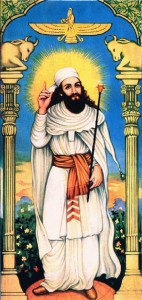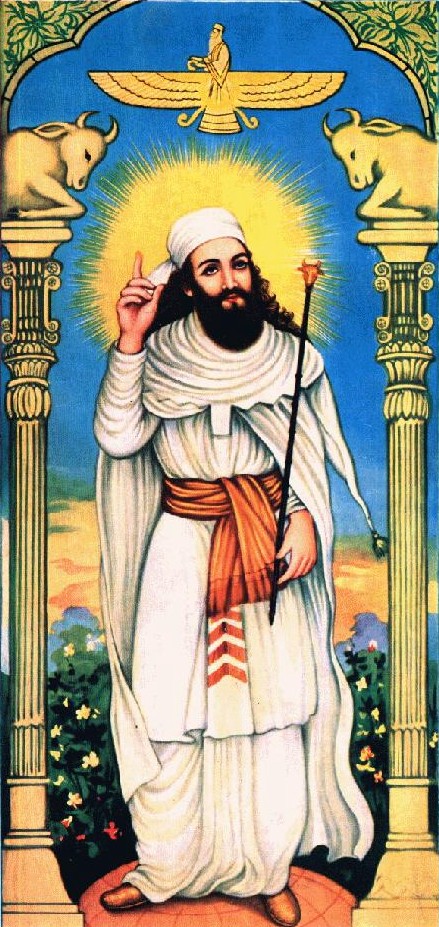Zarathustra was a prophet of the religion Zoroastrianism, named after him, and he is credited to be the establisher of the religion. Zoroastrianism was mainly practiced in Iran and is considered to be the Persian Religion between 600 BCE to 650 CE, although the religion is still practiced in certain eras of Iran.

A Fictional Portrait of Zarathustra portrayed by Mubeds (Zorostrian Priests) and Hierarchy of the Fire Temples.
The exact dates of Zarathustra birth is unknown, yet scientists speculate that it accrued around 1000 BC and the he was born in the North- East of Iran. His epiphany accused while he was around the age of 30, and the first followers were his close family.
Zarathustra sayings are presented in 17 psalms and texts. The basis of the religion is- ״Good Thoughts, Good Words, Good Deeds״. Zarathustra believed that there is a cosmic struggle between truth and lie and that is an essence of our existence. A human is free to choose if to follow good or bad, and by choosing good they help defeat the darkness. Zarathustra believed that good will eventually overpower the bad. There is one god in Zoroastrianism- Ahura Mazda (good) and there is the evil spirit, Ahariman.
Zarathustra philosophy is focused around the power of Ahura Mazda- rhetorical questions regarding the creation of the sun and stars, who feeds the plants and who created the light and darkness. These questions are attributed to Ahura Mazda’s power and significance in the world.
The Zoroastrianism is a spiritual belief in good- it is believed that every creation of Ahura Mazda is for the sake of goodness and that mankind should take full advantage, all while contributing back to the world.
It is believed in Zoroastrianism that the end of the world will acute 3000 years after the death of Zarathustra, and that as a prophet and a messiah, he will be credited for the return of the dead and the creation of a new and full world.
Although Zoroastrianism was the official religion of Persia, it was not only practiced by Persians- the Trojans believed in it too. The religion spread out across the East, specifically in Armenia.
Zoroastrianism suffered an extinguishing after the the Muslim conquer of the region in 636- the oppression and ethnic cleansing made on the believers of the religion left few practicing Zoroastrianism in Iran. Today, there are about 140,000 believers of Zoroastrianism left in the world.
Many cults were created under the influence of Zoroastrianism- one such as Manichaeism.
The German philosopher Friedrich Nietzsche has used the Zarathustra in his philosophical novel “Thus Spoke Zarathustra: A book for All and None”. The novel was written in Zarathustra’s view of the world, yet with an exception- while Zarathustra was credited with establishing a religious value system, Nietzsche’s Zarathustra has questioned the traditional value system and was able to change it completely. Although controversial, this version of Zarathustra is not anti-god- instead of yearning for the love of god, he preaches for the love of mankind.
Zarathustra is usually drawn wearing only white and with a turban around his head. Just as other prophets, there is an halo that surround him and he is holding stick.
